The Samsung Galaxy S6 and S6 edge Review
by Joshua Ho on April 17, 2015 9:00 AM EST- Posted in
- Smartphones
- Samsung
- Mobile
- Galaxy S6
- Galaxy S6 Edge
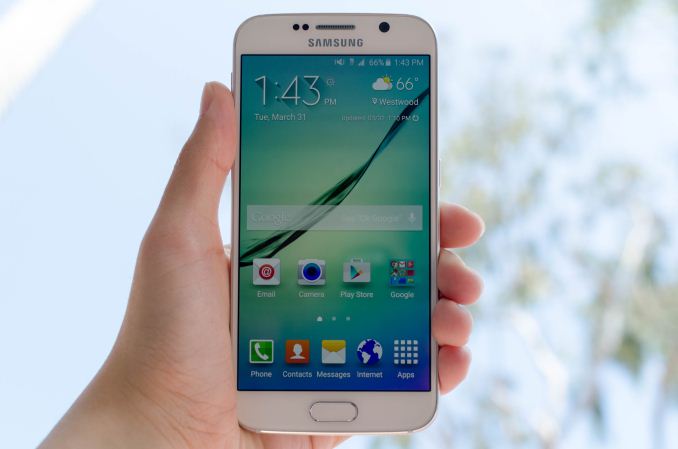
As recently as the Galaxy S5, Samsung had a fundamentally different strategy from companies like HTC and Apple. While design wasn’t ignored completely, Samsung Mobile had a different set of priorities. In general, it felt like Samsung wanted the phone to have every feature possible to please every possible potential customer. Features like a removable battery and microSD card slot seemed to be a crucial point of differentiation. TouchWiz focused on delivering a full suite of applications even if they were pretty much redundant when compared to Google’s applications. Samsung also seemed to cost-optimize their external shells, favoring polymer builds over glass or aluminum. Since the Galaxy S, this strategy paid off handsomely. With the help of strong marketing, Samsung proceeded to dominate the Android market from the days of the Galaxy S2, to the point that almost no other Android OEM was relevant in terms of market share.
However, Samsung’s tried and true strategy failed with the Galaxy S5. Fundamentally, Samsung had always been competing with Apple and their iPhone line-up at the high end, but Samsung consistently held a price advantage. The real problem was the rise of low-cost flagship phones, which squeezed Samsung significantly. Other OEMs were able to justify their high-end pricing by delivering a polished software experience and premium hardware design. In comparison to these relatively cheap phones which delivered largely the same experience and hardware, Samsung’s sales crumbled and the Galaxy S5 didn’t meet sales expectations.
This brings us to the Galaxy S6, which is supposed to be Samsung’s attempt at refocusing their product design and lineup. Design has become a major priority, and the Galaxy S6 is a radical departure from previous design in terms of almost every design choice. The Galaxy S6 represents the best that Samsung can make to some extent, as a great deal of the phone is composed of Samsung-made parts to achieve maximum vertical integration as seen in the specs below.
| Samsung Galaxy S5 | Samsung Galaxy S6 | Samsung Galaxy S6 Edge | |
| SoC | MSM8974ACv3 2.45 GHz Snapdragon 801 | Exynos 7420 2.1/1.5GHz A57/A53 | Exynos 7420 2.1/1.5GHz A57/A53 |
| RAM | 2GB LPDDR3 | 3GB LPDDR4-1552 | 3GB LPDDR4-1552 |
| NAND | 16/32GB NAND + microSD | 32/64/128GB NAND | 32/64/128GB NAND |
| Display | 5.1” 1080p SAMOLED HD |
5.1” 1440p SAMOLED |
5.1” 1440p SAMOLED, Dual Edge |
| Network | 2G / 3G / 4G LTE (Qualcomm MDM9x25 UE Category 4 LTE) | 2G / 3G / 4G LTE (Category 6 LTE) | 2G / 3G / 4G LTE (Category 6 LTE) |
| Dimensions | 142 x 72.5 x 8.1 mm, 145 grams | 143.4 x 70.5 x 6.8mm max, 138 grams | 142.1 x 70.1 x 7.0mm max, 132 grams |
| Camera | 16MP (5132 x 2988) Rear Facing with 1.12 µm pixels, 1/2.6" CMOS size, 31 mm (35mm effective), f/2.2 | 16MP (5132 x 2988) Rear Facing w/ OIS, f/1.9, object tracking AF | 16MP (5132 x 2988) Rear Facing w/ OIS, f/1.9, object tracking AF |
| 2MP Front Facing | 5MP Front Facing, f/1.9 | 5MP Front Facing, f/1.9 | |
| Battery | 2800 mAh (10.78 Whr) | 2550 mAh (9.81 Whr) | 2600 mAh (10.01 Whr) |
| OS | Android 4.4 w/TouchWiz |
Android 5 (64-bit) w/TouchWiz | Android 5 (64-bit) w/TouchWiz |
| Connectivity | 802.11a/b/g/n/ac 2x2 + BT 4.0 (BCM4354), USB3.0, GPS/GNSS, MHL, DLNA, NFC |
2x2 802.11a/b/g/n/ac + BT 4.1 (BCM4358), USB2.0, GPS/GNSS, NFC |
2x2 802.11a/b/g/n/ac + BT 4.1 (BCM4358), USB2.0, GPS/GNSS, NFC |
| Wireless Charging | N/A | WPC 1.1 (4.6W) & PMA 1.0 (4.2W) |
WPC 1.1 (4.6W) & PMA 1.0 (4.2W) |
| Fingerprint Sensor | Swipe | Touch | Touch |
| SIM Size | MicroSIM | NanoSIM |
NanoSIM |
Design
There’s a lot of ground to cover in the Galaxy S6 and S6 edge, but probably the most immediate change is to the design. The Galaxy S6 is a unibody design, with no apparent screws. This does mean that there’s no removable battery or microSD slot, which shouldn’t be a problem for most people although this may be enough for some to write off this phone completely.
The back cover is now glass instead of plastic, and is attached to the phone with glue instead of plastic latches. Regardless of color or model, Samsung has placed an extremely fine pattern beneath the glass that manages to be subtle but also surprisingly brilliant under direct light. It’s tasteful in a way that the Galaxy S5 and Note 4 weren’t. The back of the phone also has a single LED flash, a heart rate monitor, and the camera which bulges out significantly. I personally don’t have a problem with camera humps, but the Galaxy S6’s camera hump is probably the biggest I’ve seen in recent memory.
The glass back cover meets the metal frame of the phone, which provides most of the structural rigidity and strength. On the normal Galaxy S6, this frame has a very slight curve and is almost cylindrical along the top and bottom of the phone, but flattens out along the sides for better grip. The bottom of this frame has the speaker, microUSB port, and 3.5mm headphone jack, which does make for some resemblance with Apple products launched within the last year. At any rate, the placement of the speaker, USB port, and 3.5mm jack are all appropriate for a phone.
The left side of the frame contains the volume buttons, which are clicky and solid, although pressing the buttons off-center does produce a noticeable flex. The right side of the frame has the power button and the nanoSIM slot on the normal version.
On the edge variant, the sides of the frame are dramatically thinner and appear to be angled out when compared to the Galaxy S6. In the hand, this makes it feel much thinner than the S6, but it really feels almost too thin to hold comfortably. Combined with the flat back, it’s really a bit of a struggle to pick up the edge off of a table, which compromises usability when compared to the normal S6.
The top of the frame contains the IR LED for TV capabilities and a hole for a microphone. On the edge variant, the nanoSIM slot is relocated to the top of the phone.
The front of the phone is probably the only aspect of the design that feels relatively similar to the Galaxy S5. However, the texture of the bezel beneath the glass is similar to the subtle finish of the back cover, which makes for a unique visual effect that manages to be tasteful and quite unique. Other than this, we see the same layout as most Galaxy phones, with two capacitive buttons (multitasking on the left, back button on the right) and a physical home button. In the case of the Galaxy S6, this home button has been turned into a fingerprint scanner that is touch-based rather than a swipe sensor. Along the top of the front face, we also see the ambient light sensor, a proximity sensor, the earpiece, and the 5MP front-facing camera. Directly below these items is the display driver beneath the bezel, which is similar to the “logo bar” of the One M7, M8, and every other phone on the market today. On the S6 edge, the sides of the display are curved to reduce the width of the phone, which does make it easier to hold in the hand, but there’s really no bezel reduction here as the side bezels seem to be larger than what we see on the S6.
Overall, the design of the Galaxy S6 and S6 edge is really unlike anything else they’ve produced in recent memory. The phone itself is well-sized and feels much more ergonomic than the Galaxy S5 due to the thinner build and mildly reduced bezel size. It really feels like Samsung cared about the design of the phone this generation, and the attention to detail here immediately puts Samsung near the top in this area. The front of the phone still feels a bit derivative, but I suspect that there isn’t much Samsung can do to change this when faced with design constraints like a physical home button. The S6 edge does look better in some ways, but ergonomically the sharper and thinner edge is a compromise compared to the normal S6. Either phone is still easily one of the best-designed phones I’ve seen this year.


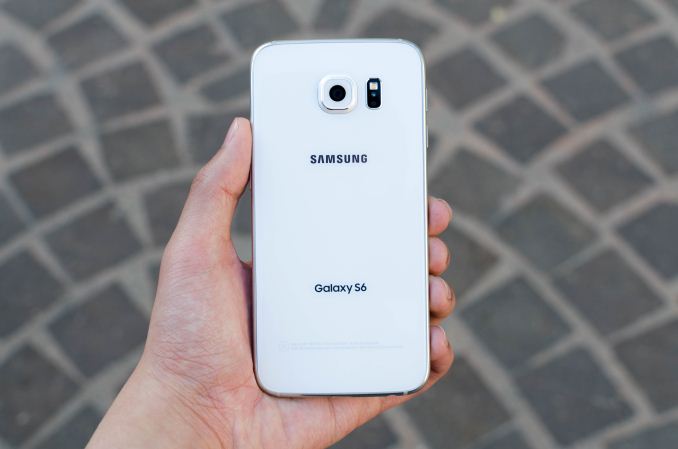
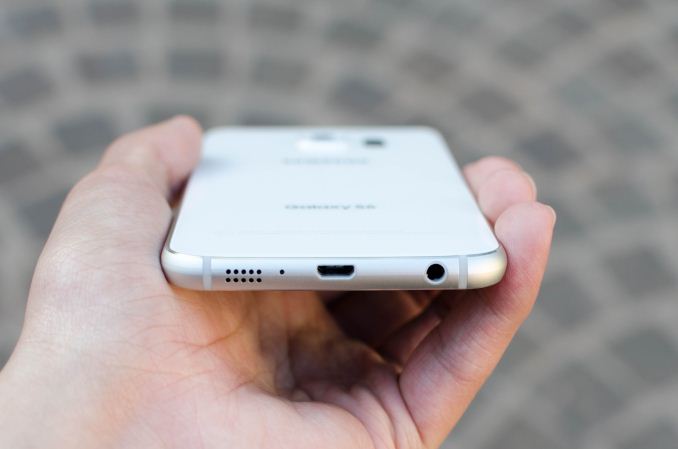
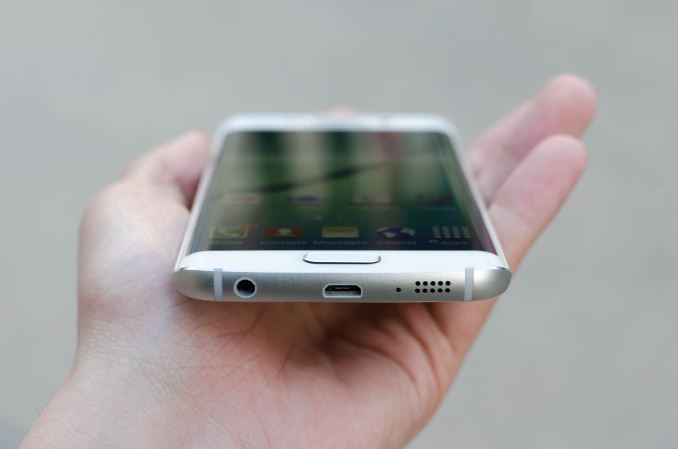



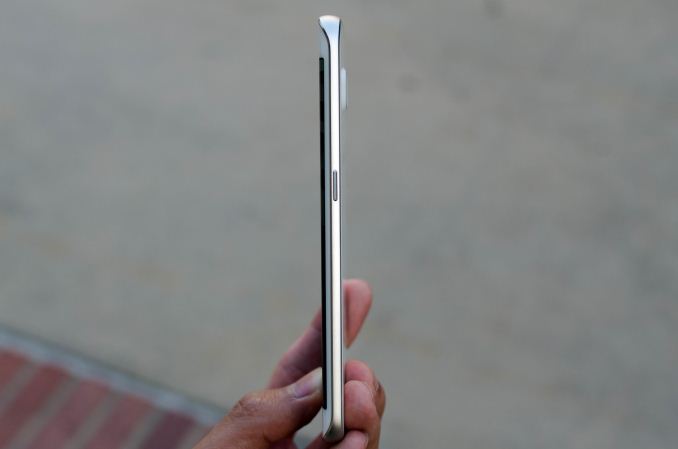

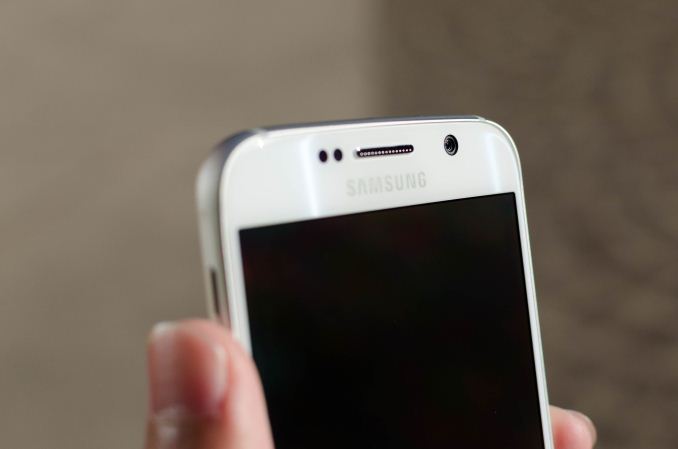
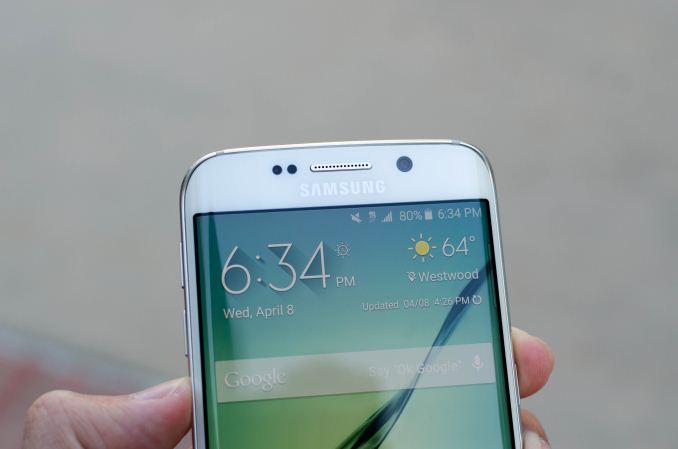








306 Comments
View All Comments
twtech - Friday, April 17, 2015 - link
There's nothing compelling about the S6 that makes me want it over the S5. Sure, it's a bit faster, but there is a loss of functionality, and it's easier to break.Realistically, we are at a point where speed doesn't matter that much anymore unless you play games on your phone, and frankly if I wanted an iPhone, I'd get an iPhone.
gnx - Friday, April 17, 2015 - link
The promise of Samsung was always the best hardware performance coupled with the most functions. Design was secondary. It just needed to not be a deal-breaker.It really took off with the S2 because it's exynos and graphics performance was the markedly above others (when Android was still behind), it had the most vibrant screesn (Super AMOLED was central to it's marketing), and added some software tricks (like toggles on the notification screen). SD-card and removable batteries were just one part of the appeal (other manufacturers offered it too).
S3 largely delivered, but S4 and S5 failed cause there wasn't enough differentiation on those fronts. They used the same Snapdragon as others, or their Exynos was no better, their screen were being parlayed as too saturated, and software additions were criticized as gimmicky. SD cards and removable batteries became the only lasting meaningful difference. Design started to become stale and a hinderance.
Looks like S6 returns to the original promise: blazing hardware performance with the new Exynos, amazing screen with the maturation of AMOLED, and software that at least doesn't get in the way. Plus additional features that really make a difference: arguably the best camera (Sammy cameras were never bad, not just ever the best) which appeals to the masses and the Gear VR which appeals to the geeks. And a design that is not a deal-breaker. (S6 does not fall behind, and S6 Edge might even have an advantage design-wise)
I'm not getting one for sure. I'm too wed to the Nexus-line. But this time round, I'd be happy to recommend it to tech-minded friends and tech-ignorant family.
generalako - Saturday, April 18, 2015 - link
The S5 wasn't "too saturated", it was the best display of any smartphone during its release, and still holds that title for any non-Samsung smartphone display -- 1 year after its release.akdj - Sunday, April 26, 2015 - link
"S3 largely delivered, but S4 and S5 failed cause there wasn't enough differentiation on those fronts. They used the same Snapdragon as others, or their Exynos was no better, their screen were being parlayed as too saturated, and software additions were criticized as gimmicky. SD cards and removable batteries became the only lasting meaningful difference. Design started to become stale and a hinderance."
General beat me to part of your comment but it's almost like you own an S3, is that correct? Have you managed to 'stay away' from the Internet for three years when it came to technology too? If so, good on ya bro! Wish I could!
The S4 was a Grand Slam. Hence the 'letdown' with S5 sales figures. That said, the two of them are significant improvements on their predecessor. ESPECIALLY AMOLED's technology, and now we're seeing the fruits of Sammys work on Exynos, the internal 'speed' of the storage and memory as well as camera, incredibly quick wifi and LTE speeds and the display, man the display. As an owner of both the iPhone 6+ & Note 4 (biz/personal), I've seen the improvements first hand. In all facets of smartphone usage. Speed, software, displays and cameras and their abilities, the fluency of the OS (I'm weird as I like TouchWiz and iOS, stock Android and OS X, even Win 8....1. Hated '8';)
Point being, the difference between the three you compared is night and day. My Note 1's subsidy couldn't end quick enough. Impulse purchase at the time and I hated it. It would time out before an app could present the dialog box to accept permission, gingerbread w/TW was a mess, as the SoC couldn't cut through the peanut butter (code). Android wasn't perfect yet, but the difference between my Note 1 (same guts as the S3) & original Xoom was unreal. TW killed that phone. The S3 was much better as the stylus software wasn't killing it, but the Note 2/S4 update was HUGE! From the SoC to the camera, the display (AMOLED has matured EVERY year. So much so DisplayMate pre iPhone 6+, could be the same I've not looked ...has the Note 4 as one of, if not THE best display on the market ...and most reviews pegged the Note 4 as the Android phone to beat as an all rounder, IF you can handle the size (it feels much smaller than it is, I've owned 1, 3 and 4 my wife the 1, 2 and 4). The S5 was a 'lot' of half baked but cool ideas. It was a killer display. Phenomenal processing and memory, decent camera in most situations (forget low light), and an extraordinary amount of 'features' added by the OEM. Fingerprint reading and All the Galaxy apps that brought the engines power to it's knees. From S Voice to S Note, S Finder to Smart Stay added to AT& T's plethora of crap, it never really had a chance to 'spread its wings'. All other phones using the SD 800-805 are beasts, including the Note 4, an even further improvement to a near perfect display (consumer) calibration, with Samsung dropping many of the heavy code or worthless crap found on the S5. Also an extra GB of RAM, quick internal storage and a healthy quick MicroSD, fast as hell radios both wifi and cellular provided an enjoyable experience and with the LP 5.01 update I received a week ago, it's the first Android phone over a ½ year later that not only hasn't slowed, but has become MUCH faster, more responsive.
Design wasn't EVER a hindrance. Quite the opposite. As an iPhone owner and two phone daily carrier, the design allowed for fast, safe access to battery and external storage. That's not a hindrance. Now I'd agree it didn't 'help' Sammy that metals and other plastics well formed and nicely crafted by other OEMs started to become the norm. I've always enjoyed the craftsmanship and 'design' from both Samsung and Apple and they've been extremely different.
While reviews would talk about the faux stitching, mock leather, plastic flimsy backs...I don't recall ever reading about the necessity of that typed of manufacture. I've never had a Sammy back 'break' precisely because of its flexibility. Made it easy to access internals and not break it after a few open and closes and the stitching or rather textured plastic exterior made the type of material used easy to grip, tough to slip. I like aluminum too. Both have benefits. Both have drawbacks. But I wouldn't call battery replacement a detriment. We've got several extra Note batteries around the house and other than backpacking (GPS only, airplane. No cell service allowed, it's good to shut it down!) and I can easily get a couple days of use from the Note or iPhone these days. Need more juice there's many hundreds of car chargers, 'power packs' and now like the Note 4, USB 2 Quick Adaptive Charging (I owned the Note 3 and USB 3 while present wouldn't work at USB 3 speeds for transfer and ultimately no benefit to speed of transfers between computer and phone. It was picky on which computers it would even 'tell' it was '3' and showed as '2'). The QC cable and adaptor need to be used but 30 minutes 0-50% and about 90 to get to 100% is phenomenal. As with most OEMs not sporting the Nexus badge, it's lame relying on the OEM to push the latest version of Android 'out' OTA (another reason USB 3 isn't necessary! Who's plugging in anymore? MicroSD can be easily plugged in for faster media transfer from the computers but who needs the cord? Other than charging, either with Android or iOS? Neither require computers not have they since, huh, ironically enough, the S3 era;). And Kies sucks! iTunes is the Mona Lisa of software in comparison.
As far as your SoC comments, just to add...Apple's the onIy OEM to successfully design their own chip and it's low level programming and architecture. They've got a single phone to worry about typically (different this year after the 5s/c test run) and they're able to control the Eco system relatively easily with onIy their 'own' to worry about) and a tablet they've used the same chip with certain upgrades or bulking up the SoC or increasing RAM. Samsung indeed has used the same Snapdragon processors as others but they used only the very best, top shelf parts in their flagships. They've never been shy about RAM, more cores or bigger, better and brighter displays.
They're efforts have paid off with Exynos. A company doesn't build a billion or two transistor piece of silicon on a die the size of your thumbnail overnight. They've done a damn fine job 'keeping up' with Qualcomm IMHO ...to th extent when the 810 exhibited bizarre heat/throttling issues, they were able to immediately slide their own 64bit SoC in for ALL markets (it's been in the S3, 4, & 5 ...too lazy to research but I don't think Sammy used nVidia's Tegra at any point) quite nimbly for such a massive release.
The 'saturation' issue very much went the way of the dodo two years ago or so with the S4, the Note 2. The S5/N3 were another HUGE step up and as General and I've echoed, the N-4 was even better and besting most of the flagship LCD panels. With a display setting the user can control you can 'over' saturate things if you'd like but go back and compare how good this transitions actually were objectively. Here and at DisplayMate.
You missed the actual displacement of LCD's dominance by Super AMOLED during the exact time period you specify. Apple is using it in their watch. It's gorgeous and the S5 software additions, we do agree, are/were, and they leaned 'gimmicky'.
The improvement was evident with the Note 4 six months later and even more so with the S6.
I am curious though, has Samsung dropped the lollipop update for the S5 like the Note 4 in America? Or European countries with the Snapdragon 801/5? If so, and you've downloaded it, has Sammy remedied that bloat by a significant margin? I was happy with 4.4.4 on the N4, but 5.0;1 is like lightning (Nova launch 70%/Google Lauch 30%)
I can't imagine there's a beast trapped in there. The Note 4 has the same motor albeit a 50% bump in RAM. Seems like a simple S/W update as the sales stailed would've helped a company and millions of end users. I think they're trying (HARD) to optimize T/W and abide by Google's rules as muc as feasibly possible when you're using the OS with things like SPen, fingerprint scanning genesis, touch to share NFC or '(S)urrond(S)ound' @ the party!
chizow - Friday, April 17, 2015 - link
Nicely written, fair and balanced review.I was disappointed when I heard Samsung went with a unibody design and removed the option for removable storage and replaceable battery, but I understand the decision and ultimately the market has spoken and agreed with this decision. Personally, the changes would've been unremarkable to me as I would throw a Spigen case on the phone anyways, so the least striking changes to the face would've been the only thing I would've noticed over my S4.
At the same time, I realized without these features, there was really much less reason to go with a Samsung/Android device, so along with the option to BYOD for work, I went ahead and got an iPhone 6 Plus. I guess I was ready to go with a phablet and there was a number of annoyances I had with Android (just too bloaty and too many hidden CPU drainers leading to awful battery life). My work iPhone on the other hand would go DAYS without needing to be charged.
Samsung also has an awful track record of supporting their existing products as they are always rushing towards "The Next Big Thing"; this has held true for a number of their products from SSDs, to phones, to Smart TVs. They just don't care once they have your money, they figure bad support is just forced obsolescence and a way to get more of your money in 2-3 years.
My iPhone 6 Plus hasn't been perfect and there are some oddball bugs I am running into (like Pandora burning CPU/battery randomlly), but overall I'm happy with the decision. We'll see where things stand in a few years when I am ready for another phone upgrade.
Drumsticks - Friday, April 17, 2015 - link
The Galaxy S4 just received the lollipop update. That makes for at least 2 years of updates, which is much better than they used to be.chizow - Saturday, April 18, 2015 - link
But that's just another example of Android's disjointed hodgepodge support model. Only more recent hardware supports their latest updates and then it is still up to the OEM and then the carrier's discretion to push the OTA update. End result is late updates that are already borderline irrelevant or no update at all.IOS isn't perfect either and has had some bunk updates but I got the iOS 8.3 just three days after it was covered here.
Ammaross - Friday, April 17, 2015 - link
"...annoyances I had with Android (just too bloaty and too many hidden CPU drainers leading to awful battery life)""..some oddball bugs I am running into (like Pandora burning CPU/battery randomlly)"
Trade one demon for a devil. If I had to deal with the same thing either way, I'd go with the one you can actually have a chance at fixing yourself rather than just having to deal with it. :P
chizow - Friday, April 17, 2015 - link
Well at least with iOS it is a well-documented solution that just involves closing and re-opening Pandora, vs. the solution to bloaty Android CPU suckage the answer is root your phone and become your own 24.7 tech support . :pPeichen - Saturday, April 18, 2015 - link
chizow is right. I tried to use a Note 3 to replace my iPhone 5 before iPhone 6 came out and after spending 2 weeks rooting, loading launchers, mod and so on I decided I don't want to waste any more time tweaking a phone. I had enough of that from high school and college days overclocking my water cooled computer. My time is a lot more valuable now.